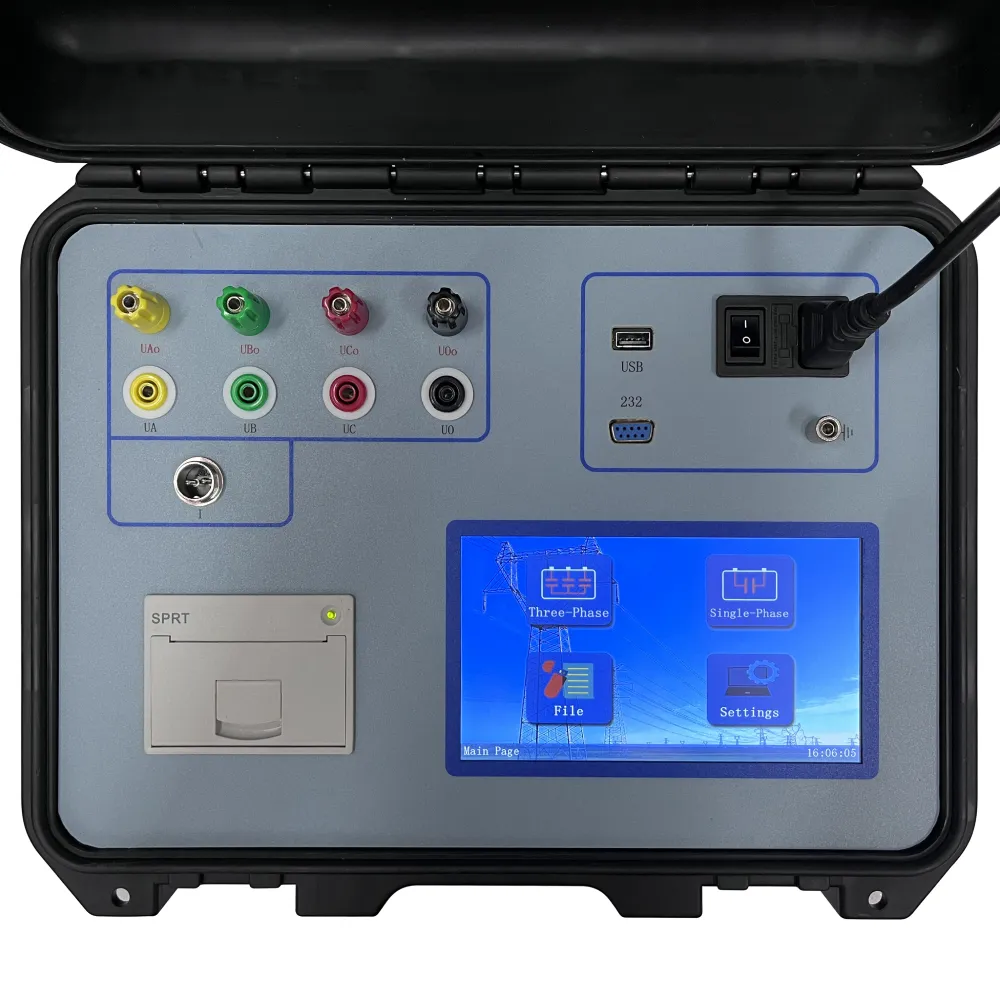 English
English


Understanding Voltage Requirements for Insulation Resistance Testing
Test Voltage for Insulation Resistance Understanding Its Importance and Application
Insulation resistance testing is a crucial procedure in ensuring the safety and reliability of electrical systems. This process involves measuring the resistance of electrical insulation to identify any potential failures or degradation over time. One of the key parameters in insulation resistance testing is the test voltage applied during the measurement. Understanding the appropriate test voltage for insulation resistance is essential for achieving accurate, reliable results and maintaining electrical safety.
What is Insulation Resistance?
Insulation resistance refers to the resistance between two conductive parts that are separated by an insulating material. Over time, insulation can deteriorate due to exposure to environmental factors such as moisture, temperature fluctuations, mechanical stress, and chemical contamination. This deterioration can lead to reduced insulation performance, potentially resulting in electrical failures, short circuits, or hazardous conditions. Hence, regular testing of insulation resistance is necessary to ensure that insulation materials are functioning correctly and are within acceptable limits.
The Role of Test Voltage
The test voltage used during insulation resistance testing is critical as it helps determine the condition of the insulation under stress. Different insulation materials and systems may require different test voltages to accurately assess their performance. Common test voltages include 250V, 500V, 1000V, and even higher, depending on the equipment and standard practices outlined by regulatory bodies.
1. Low Voltage Testing (250V - 500V) This range is typically used for measuring insulation resistance in low-voltage applications, such as residential wiring and small electrical devices. Applying a low test voltage helps prevent damage to sensitive electronic components while still providing an indication of insulation integrity.
test voltage for insulation resistance

2. Medium Voltage Testing (1000V) Used in industrial applications and medium-voltage systems, this level allows for a more thorough assessment of insulation materials that are expected to operate at higher voltage levels. It can help identify weaknesses that might not be apparent under lower voltages.
3. High Voltage Testing (2500V and above) For high-voltage installations, applying even greater test voltages can reveal insulation flaws that may lead to catastrophic failures. However, care must be taken to ensure that the test does not damage the insulation or create unsafe conditions.
Factors Influencing Test Voltage Selection
When selecting a test voltage, various factors must be considered
- Equipment Type The type of electrical equipment and the insulation materials used will dictate the appropriate test voltage. - Standards and Regulations Consulting industry standards (such as IEC, IEEE, or local regulations) is essential to ensure compliance and safety. - Environmental Conditions Factors like temperature and humidity can affect insulation resistance, necessitating adjustments to test voltages or conditions.
Conclusion
In conclusion, the test voltage for insulation resistance is a vital aspect of electrical testing protocols. Proper selection and application of test voltages ensure that insulation materials are adequately assessed, fostering safety and reliability in electrical systems. Regular insulation resistance testing, combined with appropriately chosen test voltages, can play a significant role in preventing electrical failures and ensuring the longevity of electrical installations. As technology evolves and systems become more complex, adhering to best practices in insulation testing will be more critical than ever.
-
Differences between open cup flash point tester and closed cup flash point testerNewsOct.31,2024
-
The Reliable Load Tap ChangerNewsOct.23,2024
-
The Essential Guide to Hipot TestersNewsOct.23,2024
-
The Digital Insulation TesterNewsOct.23,2024
-
The Best Earth Loop Impedance Tester for SaleNewsOct.23,2024
-
Tan Delta Tester--The Essential Tool for Electrical Insulation TestingNewsOct.23,2024





